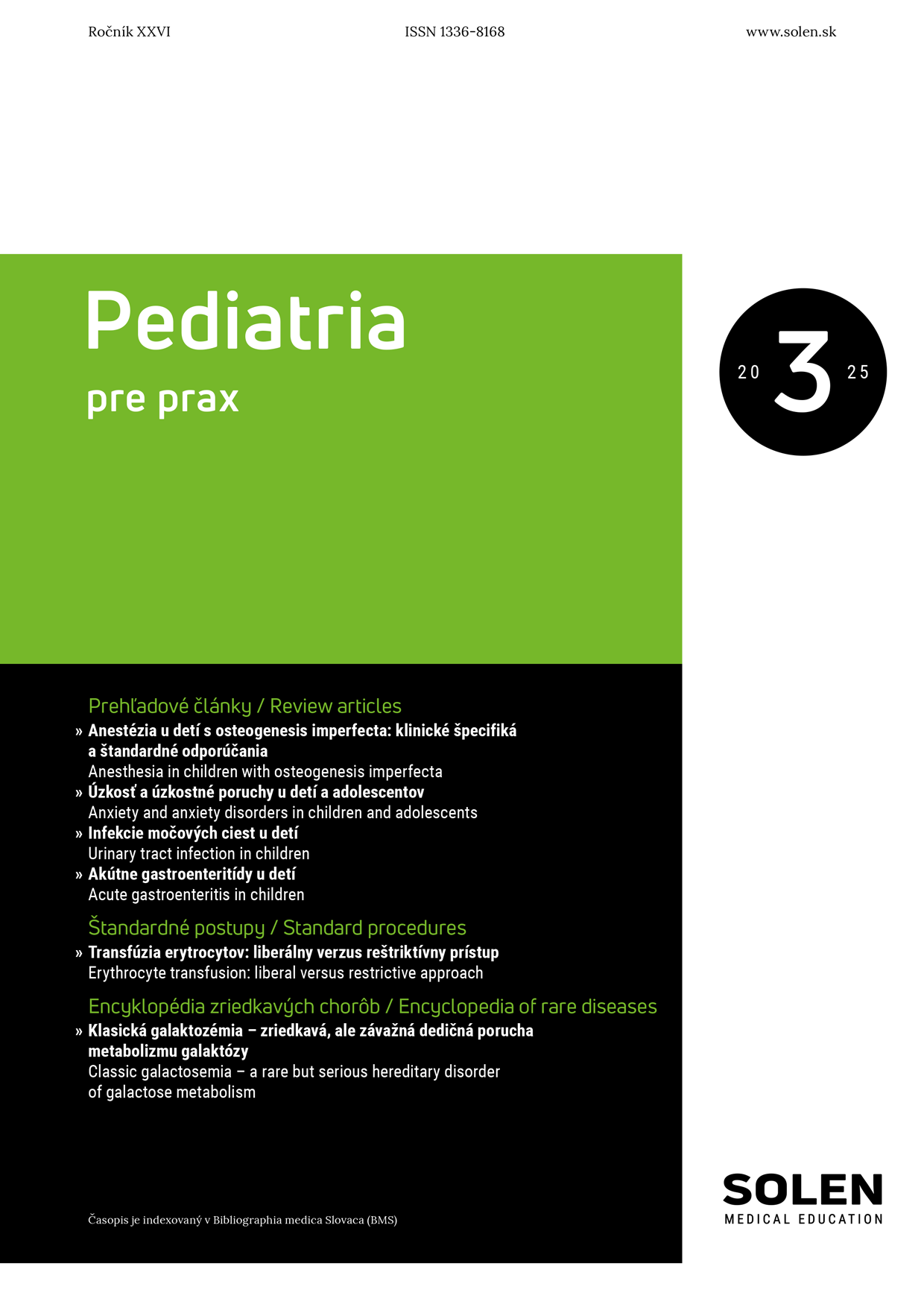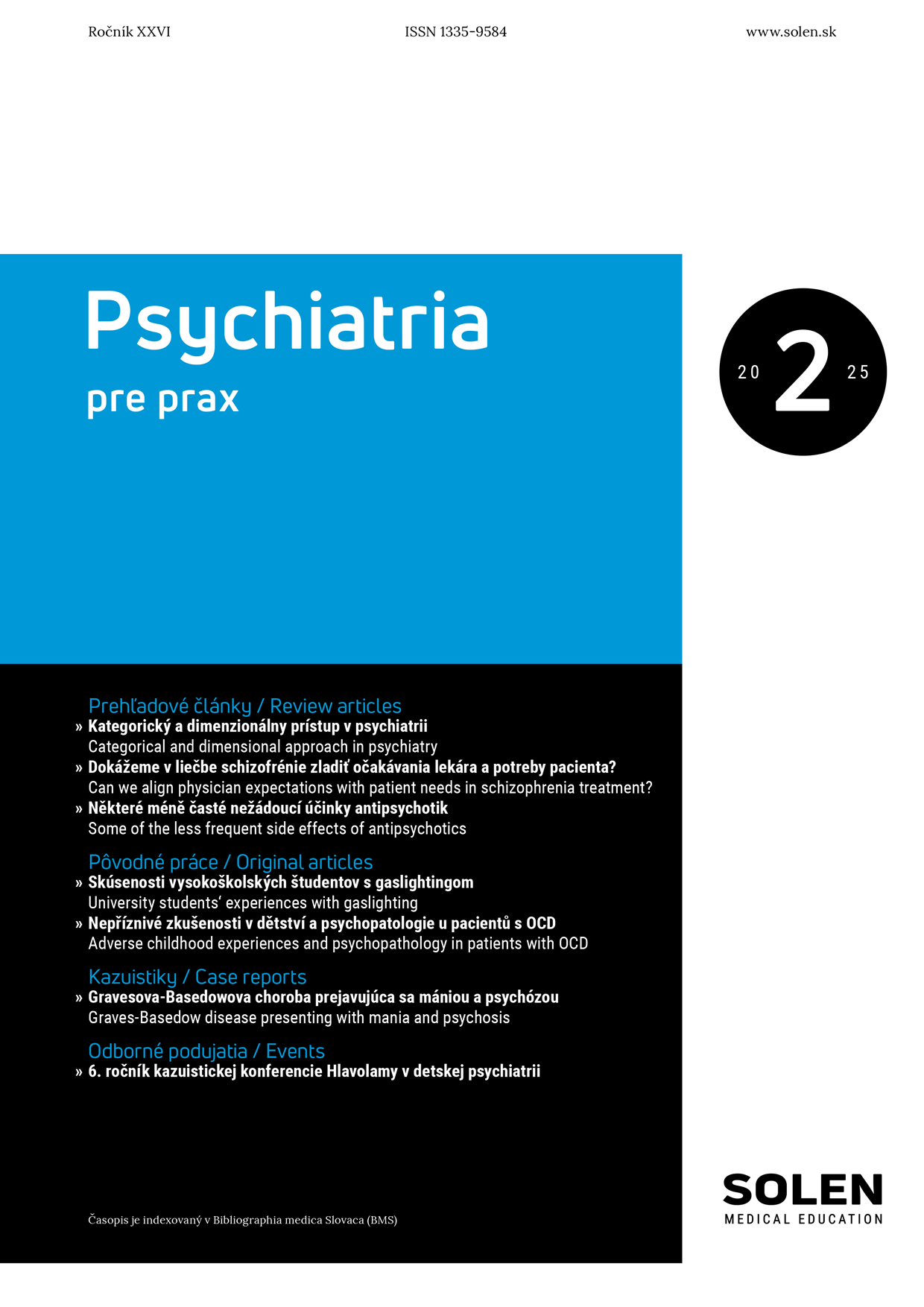Neurológia pre prax 1/2011
Sandiferův syndrom
Sandiferův syndrom je klinická jednotka charakterizovaná abnormními pohyby asociovanými s gastroezofageálním refluxem, s nebo bez hiátové hernie. Vyskytuje se zejména u kojenců a mladších dětí, ale byl popsán raritně i u dospělých a novorozenců. V klinickém obraze se objevují různé abnormní pohyby trupu, končetin a šíje (opistotonus, verze hlavy a očí, torticollis a jiné dystonické postury), které jsou v atakách i několikrát denně, zejména po jídle. V klinické praxi je nejčastěji zaměňován za epileptické záchvaty nebo některou z forem dystonie. Je považován za poddiagnostikovaný.
Kľúčové slová: torticollis, neepileptické záchvaty, pseudodystonie, gastroezofageální reflux.
Sandifer’s syndrome
Sandifer’s syndrome is a clinical entity characterised by abnormal movements associated with gastroesophageal reflux, with or without hiatal hernia. This syndrome occurrs especially in toddlers and infants but it has been rarely reported also among adult patients and newborns. In the clinical picture various abnormal movements of the body (opisthotonic posturing, head/eye version, torticollis and other dystonic postures) occur in periods several times per day, mainly after feeding. Sandifer’s syndrome is most commonly mistaken for epileptic seizures or some form of dystonia. The syndrome is taken for underrecognized.
Keywords: torticollis, nonepileptic seizures, pseudodystonia, gastroesophageal reflux.

















